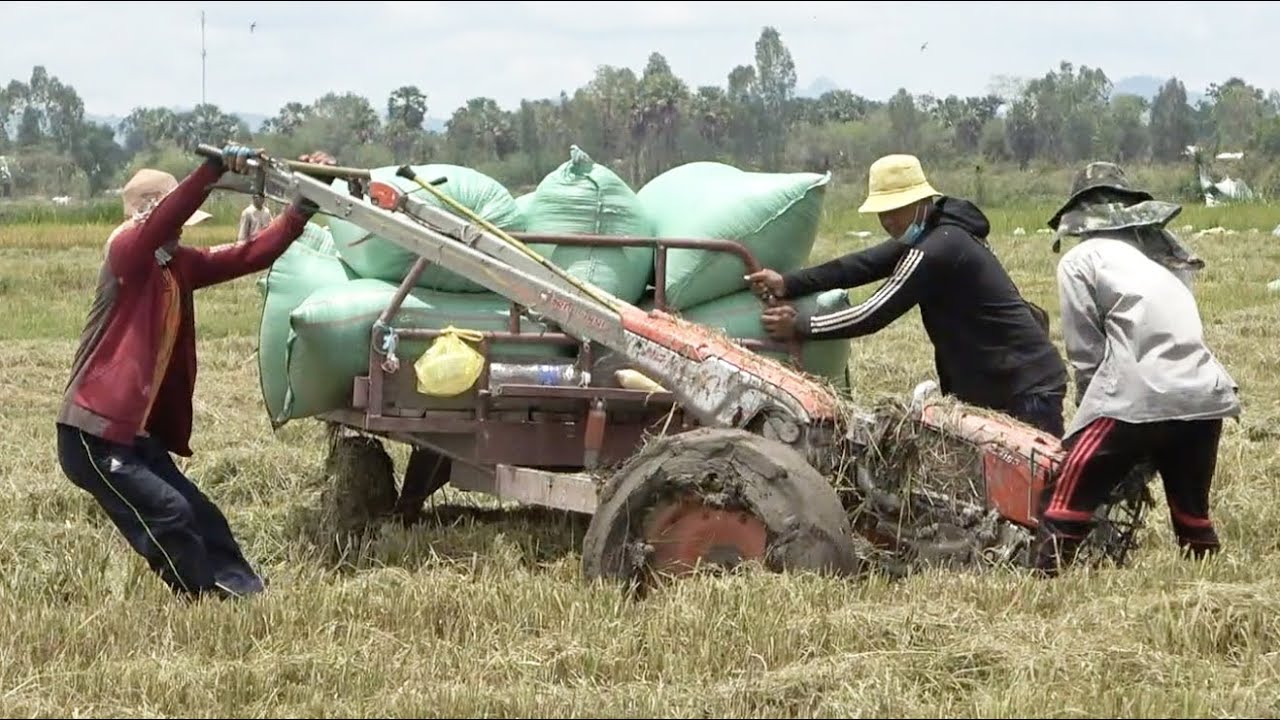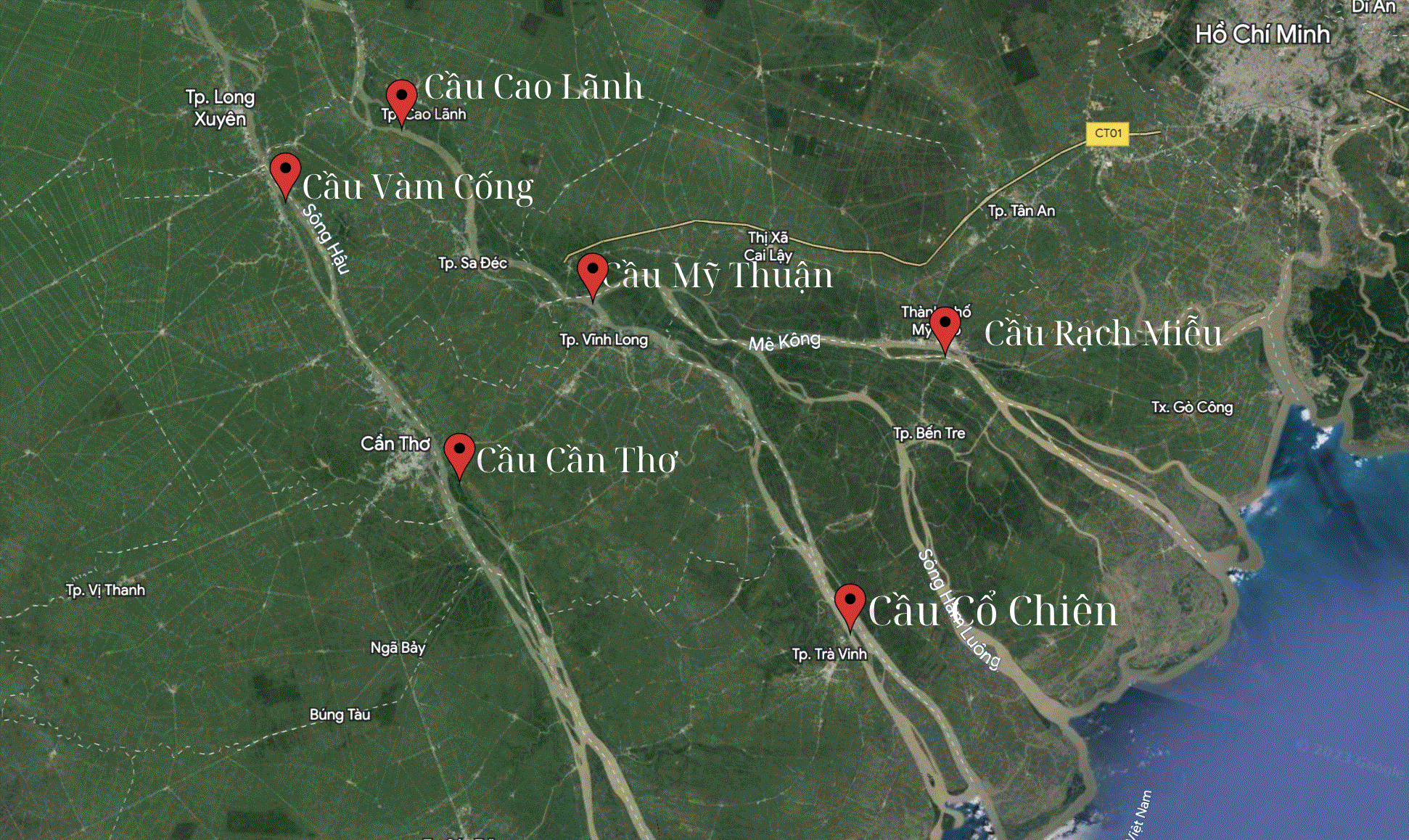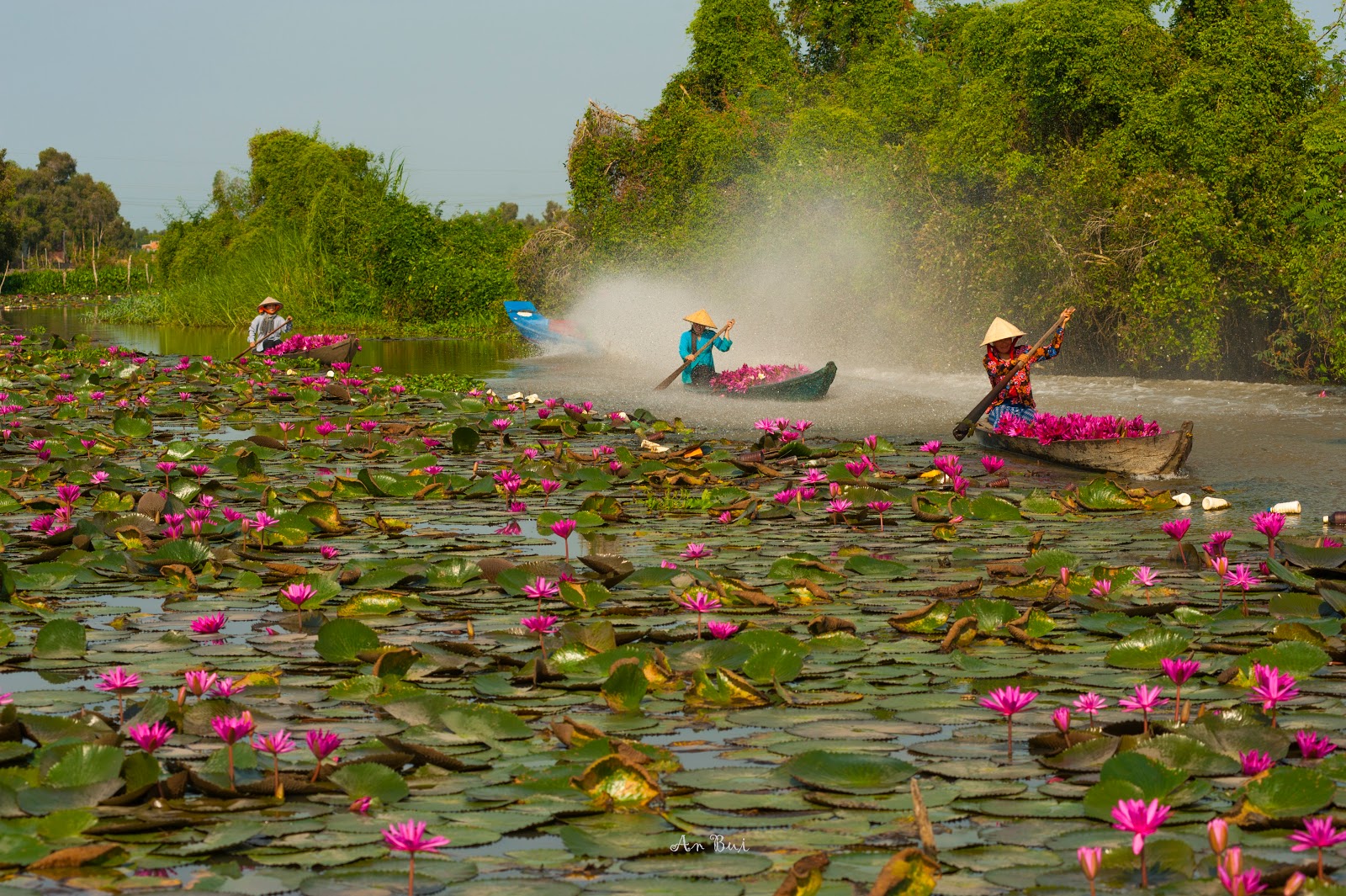Knowing the answer to why is the Mekong Delta important is much more than just a unique travel experience; it shows how vital this region is for Vietnam’s economy, food safety, and ecological balance.. This article explores the critical role this exotic delta plays, in multiple sectors including agriculture, export, national sustenance, and biodiversity. So, here’s a unpack of the all important reasons why Mekong Delta is pisotally essential.
The Economic Giant, Enabling Vietnam’s Agriculture and Products
Why is the Mekong Delta important? The most well-known reason is the huge financial scale it delivers. It is the fertile heartland that powers much of Vietnam’s food system and export strength.
- Vietnam’s Indolent “Rice Bowl”: Those words are no exaggeration. [The Delta produces more than half of Vietnam’s total rice harvest year after year.] This remarkable volume not only guarantees the availability of staple food for the domestic population but also supplies the country’s position as one of the world’s largest rice exporters. An astonishing estimate puts as high as 90% of exported rice in Vietnam coming from this area alone!
- The Nation’s Fruit Basket: When it comes to fruit production that complements its rice production, the Mekong Delta is practically Vietnam. Its tropical climate and alluvial plains permit vast orchards producing lightening numbers of well-loved fruits — mangoes, coconuts, durian, rambutans, longans, pomelos, pineapples, jackfruit and more — that supply markets around the country and abroad.
- Fish Production & Export Centre: The Delta is the undisputed centre of Vietnam’s crucial aquaculture industry. It accounts for the lion’s share of farmed pangasius (catfish) and shrimp, which are the nation’s top seafood export products. This production, combined with huge input from coastal and riverine wild-catch fisheries, is estimated to account for over 60% of the total value of Vietnamese seafood exports.
Why is the Mekong Delta important? The total quantity of food and commodities produced here makes the Mekong Delta an indispensable pillar of Vietnam’s agricultural GDP, and also a major source of export revenue, which explains economically the significance of the Mekong Delta to national prosperity.

The Cornerstone of Vietnam’s Food Security
But the Mekong Delta’s staggering productivity does much more than power exports and GDP; it, literally, underwrites Vietnam’s national food security. This role in feeding the nation is important to understand when thinking about the question why is the Mekong Delta important ?
The national population now surpassing 100 million persons (as of early 2025), achieving a stable and affordable food supply with 14.8% of the labour force employed in agriculture and its allied sectors remains critical. Mekong Delta’s vast production of rice, the most important staple food of people’s daily diet, directly ensures availability and stabilizes prices throughout the country. Likewise, its abundant output of fish, shrimp, fruits and vegetables guarantees millions a supply of vital nutrients and dietary variety. This dependable internal food supply, most of it sourced from the Delta, sustains socioeconomic stability and alleviates dependence on susceptible global food markets, rendering the region strategically vital for Vietnam’s self-sufficiency.
A Biodiversity Hotspot, A Place of Vital Ecosystems
Ecologically, the answer to why is the Mekong Delta important ? is a very deep one, and tied to a unique hydrological system that sustains an extraordinary and interlinked web of life, a natural wealth that is coming under growing strains.
- A Global Biodiversity Hotspot: The intricate mix of freshwater rivers, brackish estuaries, mangrove swamps, and seasonally submerged lands have rendered the Mekong Delta historically regarded as a worldwide biodiversity hotspot. It is home to hundreds of fish species (including commercial staples and unique fish like critically endangered Mekong giant catfish), thousands of resident and migratory bird species, amphibians and reptiles, and wetland vegetation with specialized niches. Yet, this rich natural heritage is critically threatened by upstream dam development altering flow of water and sediment, agricultural and industrial pollution, pervasive conversion of habitat, and increasing impacts of climate change.
- Wetland Ecosystem Functions: The region’s vast wetland ecosystems provide vital environmental services that are fundamental for the regional equilibrium. They act as expansive natural water filters, aid in the regulation of floodwaters during the rainy season by assimilating and holding excess water, recharge vital groundwater systems, and offer the fundamental nursery and feeding habitats on which the Delta’s massive aquatic productivity is based.
- Protective Mangrove Belts: Stretching along much of its vast coastline, particularly in its southern stretches such as Cà Mau province, the Delta’s mangrove forests act as valuable natural buffers. These resilient ecosystems shield the low-lying interior from coastal erosion, storm surges and wind damage, sequestering vast amounts of carbon and serving as critical nurseries for fish, shrimp and crabs.
- Migratory Birds: The wetlands and estuaries in the Mekong Delta are vital stopover and wintering habitats for millions of migratory birds along the East Asian-Australasian Flyway. National Parks like Tràm Chim are designated Ramsar sites (Wetlands of International Importance) in part due to their role in supporting large populations of waterbirds. Specifically, Tràm Chim is well-known as one of the most important historical safe havens for the globally important, critically endangered Sarus Crane during the dry season, an reminder of how ecologically important the Value of the Mekong Delta is to birds globally.

Tradition and Cultural Fusion Like No Other
Why is the Mekong Delta important? The Mekong Delta: A Region with Great Significance in Brazil (culturally) – Appreciation of the Mekong Delta as a region in Brazil helps the reader understand a rich tapestry that has been woven through centuries of human adaptation to the unusual river-based environment, the harmonious existence between distinct ethnicities in a society and a unique identity within a unified country such as Vietnam. The Mekong Delta: A Region with Great Importance in Brazil (social) – Understanding the Mekong Delta as social world held realm of sea, river, and people in Brazil can help the reader gain consciousness of the Laguna Marina Social.
- Signature Riverine Lifestyle: For many residents, life revolves around the water — which also raises the question: Why is the Mekong Delta important? The river and canal network transports mainly by boat and sampan (ghe, xuồng), determines settlement patterns with thousands of houses lining the waterways (often on stilts) and historically promoted singular commercial interactions: see the legendary floating markets including Cái Răng or Phong Điền.
- A Mashup and Mixture of Cultures: The region is a lively cultural mosaic. Although the majority Kinh (ethnic Vietnamese) population constitutes the mainstream, the Delta notably hosts the largest Khmer Krom community outside of Cambodia. Their own language, Theravada Buddhist beliefs and colourful temples and festivals contribute greatly to the culture, especially in the provinces of Trà Vinh and Sóc Trăng. Lesser-known communities such as Hoa (Chinese Vietnamese) and Cham peoples add their own traditions and flavor as well.
- Rich Intangible Cultural Heritage: The Mekong Delta is considered the cradle of Đờn ca tài tử Nam Bộ, an amateur Southern Vietnamese chamber music style incorporating traditional instruments and vocals, having been inscribed on the list of Intangible Cultural Heritage of Humanity by UNESCO in 2013. The region also hosts many unique festivals often tied to agricultural cycles, river spirits, or ethnic traditions, such as the Khmer Ok Om Bok festival with exciting Ghe Ngo (longboat) races in Sóc Trăng.
- Flavors Inspired By Nature: The native cuisine itself is a direct reflection of the surrounding rivers and gardens. Fried, grilled and baked dishes centered on freshwater fish and shrimp, unique river vegetables and herbs (including water lily stems or sesbania flowers), coconut milk and an indescribable variety of fresh tropical fruits deliver flavours unlike elsewhere.
The answer to why is the Mekong Delta important, beyond being an economic zone, is reflected in these unique traditions, diverse ethnic influences, recognized heritage and distinct lifestyle; clearly it is cultural heartland in its own right.
Waterways are the lifeblood and arteries of trade
So why is the Mekong Delta important? These rivers are not just geographical features, but they are the life-giving arteries of the region that shape the economy and landscape.
- An Important Inland Waterway System: The Mekong Delta has one of the largest and most integrated inland waterway networks in the world, supporting population movement and transport; Image credit: Hóa Nguyễn This dense interlacing of natural rivers (such as the main Tien and Hau branches) and interconnecting man-made canals represents the main infrastructure for moving bulky agricultural products — rice, fruits, coconuts, building materials — from production areas to markets and export centers. For millions of the residents, boats are a key form of daily travel and commuting, in many cases more feasible than road transport, especially in the more remote areas.
- To cultivate massive fields of rice and orchards for consumption and export, the Mekong River gives the Delta its life source: fresh water. And historically, its annual floods were also natural depositors of nutrient-rich sediment, fertilizing the land (although loads of sediment have dropped dramatically in recent decades). Not only is this freshwater essential, but it is also used for domestic purposes by the large population in this region, making it a constant challenge to maintain enough, clean freshwater, especially as salinity intrusion is on the rise.
- Why is the Mekong Delta important? Shaper of Landscape and Lifestyles: In the end, the physical landscape of the Delta — its super level landform, its rich alluvial soils, even the location of towns and villages — is a direct consequence of millennia of fluvially induced change. The lifestyles here, such as stilt houses that stand up to floods and residents who travel mostly by boat, are adaptations to life woven with the Mekong’s hydrological rhythms — which is hydrologically why is the Mekong Delta significant.

The Importance Of It Addressing Contemporary Challenges
It is ironic that these challenges we face today in the Mekong Delta remind us why is the Mekong Delta important, and why a sustainable future for it should be a national and even regional priority. The very natural systems and resources that support its value are under significant stress.
- Vulnerability to Climate Change: The region, being one of the lowest lying deltas in the world, is uniquely susceptible to climate change. The major threats are sea-level rise, which brings salinity deep into the canals and farmland (damaging both crops and freshwater supplies), and possibly more intense and frequent extreme weather, such as droughts and flooding. These threaten directly agricultural production, fragile ecosystems and the livelihoods of its people.
- Modification of an ecosystem by upstream hydropower development: Large hydropower dams have been installed throughout the river’s upper reaches in other countries, greatly affecting the river’s natural flow regime. This has caused a drastic decline in the downstream movement of nutrient-rich sediment (important for the health of soils) and interrupted important fish migration routes, affecting agriculture and wild fisheries in the Vietnamese Delta.
It is therefore exceedingly urgent that the Mekong Delta be addressed in these interlinked challenges through innovative adaptation measures, international collaboration and a powerful commitment to sustainable development — precisely because the Mekong Delta is of such great economic, social and ecological value. Protecting its viability helps explain Why is the Mekong Delta important, not only for Vietnam’s future but, potentially, for the environmental security and stability of the wider region.

Conclusion: A Lifeblood and Irreplaceable Region
In summary, here are some clear and compelling answers to the question, Why is the Mekong Delta important ?. It is way more than a scenic landscape or a beautiful tourist spot. The long river is a pillar of national food security, an agricultural powerhouse of Vietnam, a biologically diverse ecological treasure of global significance, and a unique cultural melting pot shaped by the vagaries of a riverine environment and a critical hydrological system with immense value. These same pressures also highlight the need for sustainable management and conservation at a time when these species are facing significant pressures in the modern world. The explanation for Why is the Mekong Delta important ? lies in its contribution to the present stability and prosperous future of Vietnam.. The Mekong Delta is still of great vital and indispensable significance, affirming its position and proving the indefatiguability of the question of “the Mekong Delta importance”.
